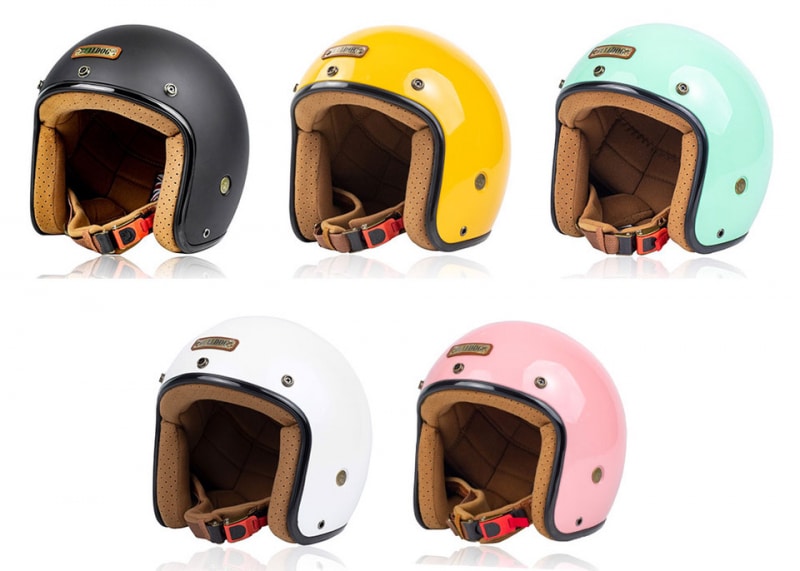Helmets are essential safety gear for a wide range of activities, from motorcycling and cycling to construction work and extreme sports. While the primary function of a helmet is to protect your head from impact, the color and visibility of your helmet play a critical role in enhancing safety. Bright colors and reflective elements can significantly reduce the risk of accidents by making you more noticeable to others. This guide explores the impact of color and visibility in helmet safety and why these features should not be overlooked.
Why Color and Visibility Matter
The effectiveness of a helmet extends beyond its structural integrity. Color and visibility are vital for preventing accidents, especially in environments where other road users, pedestrians, or machinery operators must notice you. The ability to be seen in various conditions can save lives, making helmet visibility an essential factor in overall safety.
Visibility in Traffic
For cyclists, motorcyclists, and scooter riders, visibility in traffic is crucial. Drivers of cars and larger vehicles often struggle to see smaller road users, particularly in poor lighting or during adverse weather conditions. A highly visible helmet helps:
- Reduce the Risk of Collisions: Bright colors and reflective designs ensure that you are more likely to catch the attention of drivers.
- Enhance Reaction Time: Increased visibility gives other road users more time to react appropriately.

Visibility in Outdoor Environments
For outdoor activities like mountain biking or skiing, visibility ensures that others can spot you in case of an accident or emergency. Brightly colored helmets make it easier for rescuers or team members to locate you in challenging terrains or dense vegetation.
The Science of Color in Helmet Safety
Colors play a significant role in human perception. Bright and contrasting colors are easier to spot, even from a distance. Certain colors are universally associated with warning or high visibility, making them ideal for helmets.
High-Visibility Colors
- Neon Yellow and Green: These colors are among the most visible in daylight and low-light conditions. Neon shades stand out against most natural and urban backgrounds.
- Bright Orange: Frequently used in construction and safety gear, orange is highly noticeable and often associated with caution.
- White: While not as eye-catching as neon colors, white helmets are more visible than dark colors and reflect light effectively.
Colors to Avoid
- Black and Dark Shades: While sleek and stylish, dark helmets can blend into the environment, especially at night.
- Neutral Colors: Beige, gray, and other muted tones offer minimal contrast against most backgrounds, reducing visibility.
Reflective Elements and Accessories
In addition to choosing a brightly colored helmet, incorporating reflective elements can dramatically improve visibility in low-light conditions, such as during dawn, dusk, or nighttime rides.
Reflective Strips and Decals
Many helmets come with built-in reflective strips or decals that catch and reflect light from vehicle headlights or streetlights. These are particularly effective for night riders.
LED Lights
Some modern helmets include integrated LED lights, enhancing visibility even further. These lights can be set to static or blinking modes to make you more noticeable to others.
Aftermarket Accessories
If your helmet doesn’t include reflective features, consider adding:
- Reflective tape
- Clip-on LED lights
- High-visibility helmet covers
Situational Considerations for Helmet Visibility
The importance of helmet color and visibility varies depending on your activity and environment. Understanding the specific demands of your situation can help you make the best choice.
Urban Riding
In busy urban environments, a brightly colored helmet can help you stand out amidst the chaos of cars, pedestrians, and other cyclists. Reflective elements are crucial for nighttime riding, where streetlights and vehicle headlights provide opportunities for reflection.
Rural and Off-Road Activities
In rural or off-road settings, visibility challenges include dense foliage, uneven terrain, and fewer light sources. Neon colors are particularly effective in these environments, as they contrast sharply with natural surroundings.
Construction and Work Zones
For construction workers or those in industrial settings, helmet visibility is essential for safety. Bright orange, yellow, or white helmets are often mandatory to ensure visibility among heavy machinery and other workers.
Competitive Sports
In competitive sports like skiing or cycling, visible helmets help referees, teammates, and spectators identify athletes quickly. They can also enhance safety during group activities or races.

How Weather Conditions Affect Visibility
Weather conditions can significantly impact visibility, making helmet color and reflective features even more critical.
Rain
Rain reduces overall visibility and creates glare from streetlights and headlights. Bright, reflective helmets are easier to see in these conditions.
Fog
Fog diffuses light and blurs outlines, making muted or dark helmets nearly invisible. Neon colors and LED lights are highly effective in cutting through foggy conditions.
Snow
In snowy environments, white helmets blend into the background, reducing visibility. Bright colors like red, orange, or neon green are better suited for such conditions.
Nighttime
At night, reflective elements and LED lights become essential. Dark helmets are almost invisible without these features, increasing the risk of accidents.
Choosing the Right Helmet for Visibility
When selecting a helmet, consider these factors to maximize visibility:
Color
Choose a color that contrasts sharply with your typical riding environment. For example, neon yellow or green is ideal for urban and rural settings.
Reflective Features
Look for helmets with built-in reflective elements or the ability to add aftermarket enhancements.
Activity-Specific Designs
Some helmets are designed with visibility features tailored to specific activities, such as cycling or skiing.
Maintenance Tips to Preserve Visibility
To ensure your helmet’s visibility features remain effective, follow these maintenance tips:
- Clean Regularly: Dirt and grime can dull reflective surfaces and neon colors.
- Inspect for Damage: Cracks or peeling reflective strips reduce visibility. Replace damaged helmets or accessories promptly.
- Store Properly: Keep your helmet away from prolonged sunlight exposure, as UV rays can fade bright colors.
Conclusion
The color and visibility of your helmet are critical aspects of rider safety that should never be overlooked. Bright colors, reflective elements, and LED lights enhance your visibility in various conditions, reducing the risk of accidents and improving overall safety. Whether you’re commuting through busy streets, exploring off-road trails, or working in hazardous environments, investing in a high-visibility helmet is a smart and potentially life-saving choice. Remember, safety starts with being seen.


